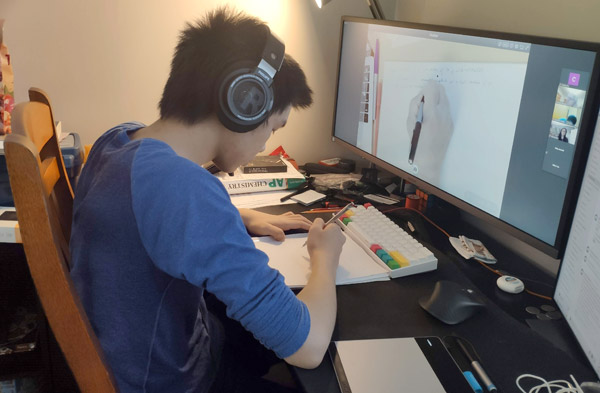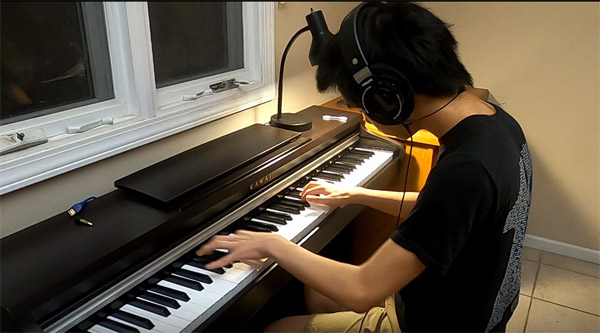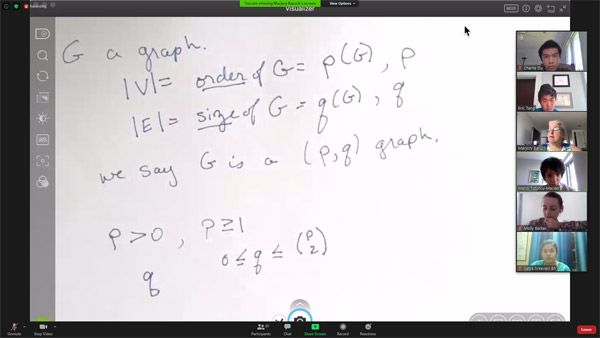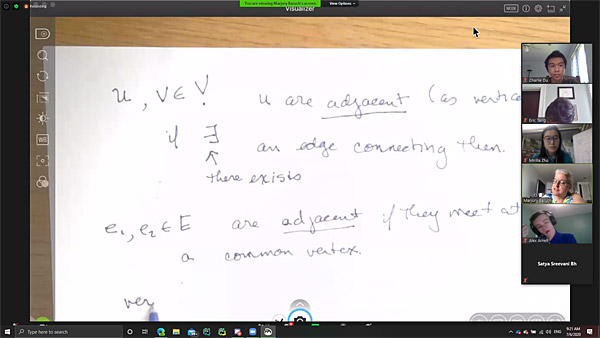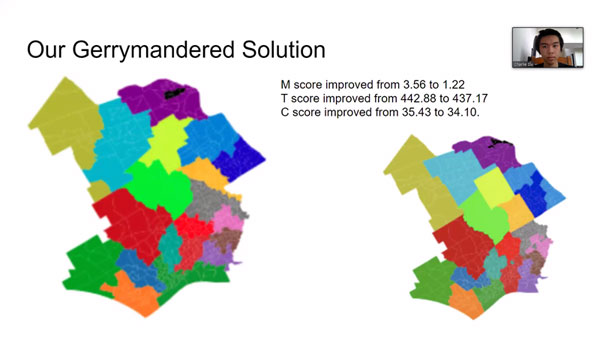Charlie Du is attending the PROMYS Bridge Program at Boston University via remote Zoom sessions. The class of 60 students included many participants from last year’s program that Charlie was happy to meet again.
“A large part of the PROMYS experience is collaboration between students. To facilitate this, PROMYS has provided every student with access to a virtual whiteboard, and a discord server to talk. So far, I think the system works really well! For class, we use Boston University’s online learning platform, and have lectures through zoom,” Charlie explains.
Charlie is taking the PROMYS Graph Theory course and will be doing a research project this summer. He has included screen shots of his Zoom meeting lectures from the Graph Theory course.
Charlie describes his Graph Theory course experience while in the PROMYS program, plus participating in research labs. “We talked about cycles on graphs, and the famous 7 Bridges of Königsberg problem. We also spent some time proving various theorems regarding these cycles. I’m excited to see to what we can apply these theorems. The homework has gotten significantly harder from the beginning of camp, but I enjoy the challenge,” Charlie reports
“I am spending more of my time working with my research project group. We have decided to research ways to gerrymander school districts to increase diversity, and maintain fairness. I’m really happy with the way our project is going, and we already have a few ideas of how to form school districts. In the 6th week, we will have to give a presentation on our research as well as write a full research paper detailing our work. I’m really excited for this because I couldn’t do it last year,” Charlie adds.
In week 4 of Graph Theory, students discussed trees, which according to Charlie are special graphs that do not contain cycles. Students also learned about their numerous applications in optimization and search algorithms.
“The research project is reaching a good point… We are starting to implement 2 of the methods that we have thought of. One is tree breaking, where you model an area as a big tree, and randomly remove edges to form school districts. Sometimes this can take quite a while to run, so we are also implementing another method that uses bipartite matching. We split the census blocks with schools from the census blocks without schools. Then we match them, while optimizing the population and shape,” Charlie explains.
“On Saturday, I performed in the talent show. The mandatory fun activities are very similar to how they were last year. It was a lot of fun seeing everyone’s talents, and it really felt like I was with everyone in person,” Charlie adds.
Charlie describes the last two weeks of his Graph Theory course at PROMYS. “In Graph Theory, we talked about the famous Towers of Hanoi problem. It’s a problem about moving different sized rings around on 3 pegs. After about a week of exploration in the problem sets, our lecturer showed us some really cool things about the problem. If you graph every state possible, you get a shape that looks like Sierpinski’s triangle! Then, in the last lecture we were introduced to the open door problem set. Most of it is about computers and optimal runtimes,” Charlie explains.
“My research lab also wrapped up this Thursday. We chose to apply our algorithm to Pennsylvania school districts, which are known to be very segregated. In the end, we found that even random districting plans were significantly less segregated than the current system. The average travel time was also the same, if not better than the current plan,” Charlie adds.
“I had a lot of fun, and really enjoyed catching up with people that I met last year. The program being online was a very unique experience, but I think the counselors and students did their best to emulate the PROMYS experience. Besides the fact that I wasn’t there in person, I think they nailed the online experience,” Charlie says.
Sounds wonderful, Charlie!


